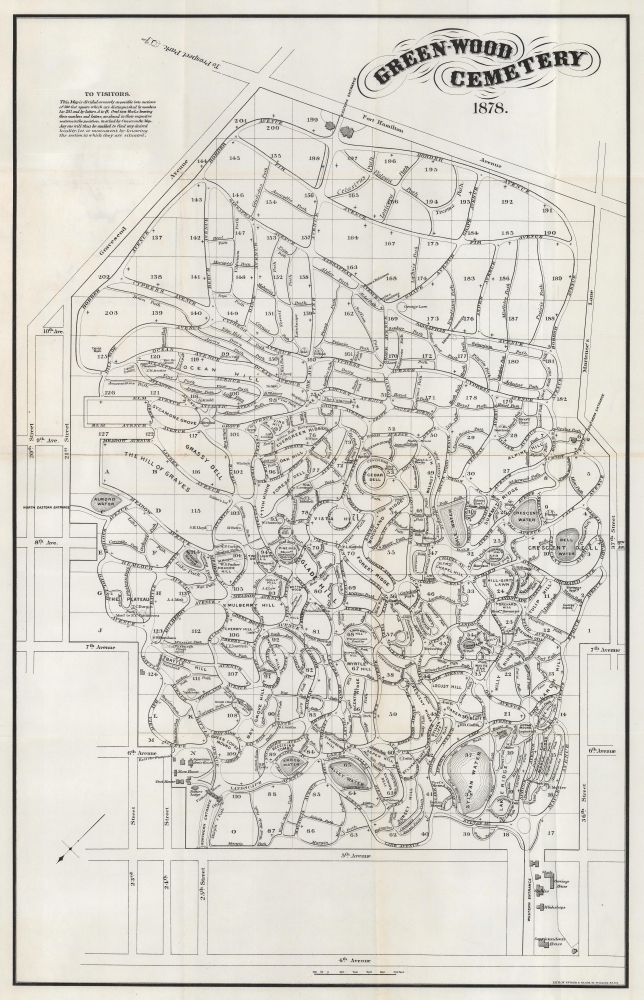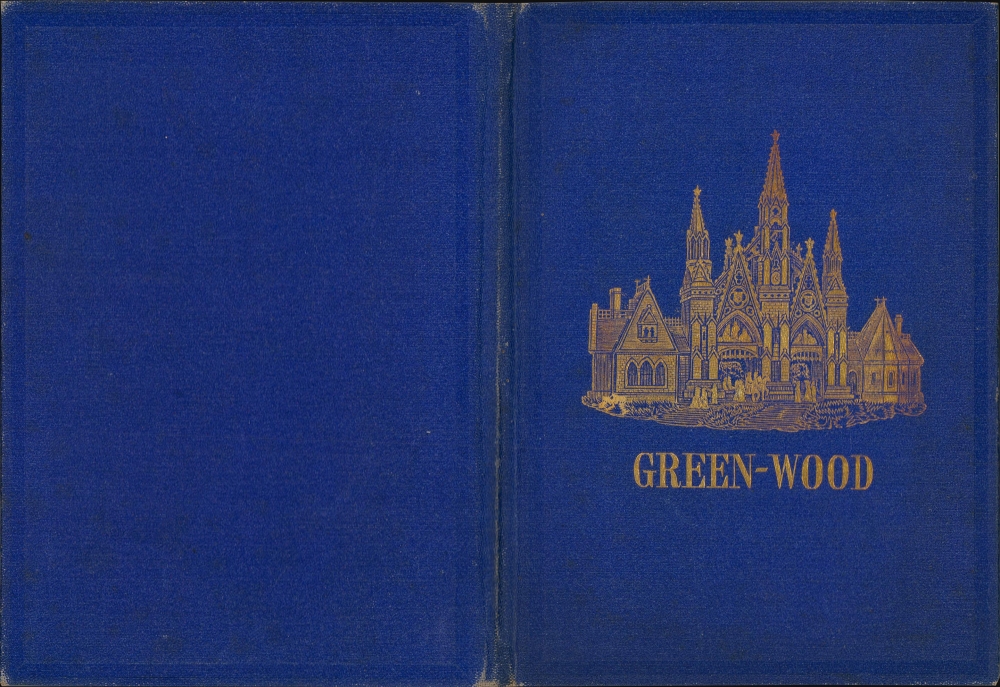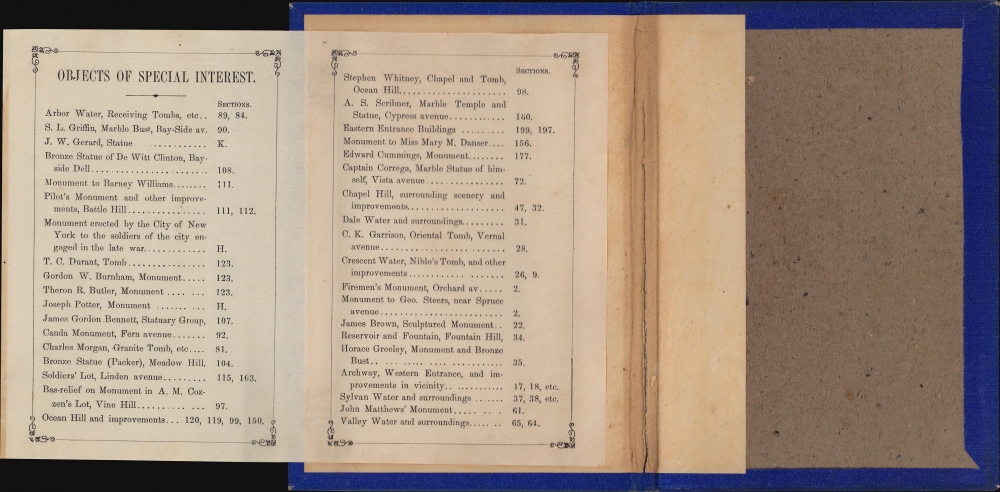This item has been sold, but you can get on the Waitlist to be notified if another example becomes available, or purchase a digital scan.
1878 Snyder and Black Map of Green-Wood Cemetery, Brooklyn, New York
GreenWoodCemetery-snyderblack-1878
Title
1878 (dated) 22.25 x 14.25 in (56.515 x 36.195 cm) 1 : 2400
Description
A Closer Look
Depicting the entirety of the cemetery, 201 sections are illustrated and labeled. The larger paths, called avenues, wind their way through the cemetery, while smaller footpaths are officially called paths. Some of the many individual monuments are marked, including Dr. S. L. Mitchell, W. A. Lawrence, S. F. B. Morse, and Edwin Hoyt. Other landmarks, such as The Catacombs, the Engine House, the Superintendent's House, and the Visitors Room, are labeled as well. Several ponds are named.Greenwood Cemetery
When Greenwood Cemetery was founded in 1838, Brooklyn was still Breuckelen, a predominantly Dutch town separated from New York by the erratic currents of the East River. As New York's population exploded in the 19th century, Brooklyn too grew, becoming the second largest city in the United States, while essentially a suburb of New York. At the time, the areas around Greenwood was rural, with unmitigated urban expansion doubling and tripling the population of both New York and Brooklyn, it was soon surrounded by an urbanized grid. Churches in Manhattan rushed to acquire land in the sprawling new cemetery, as they own small yards were full. As a result, many of New York's most prominent early citizens are today buried there. The influx of capital from all surrounding cities also affirmed that Greenwood would remain well capitalized for long term maintenance and general infrastructure improvements. The AIA Guide to New York describes Greenwood Cemetery as 'Brooklyn’s first public park by default long before Prospect Park was created.' Certainly, Greenwood Cemetery was and remains a beautiful, well maintained, green space where New Yorkers can escape for a moment of fresh air and tranquility. Certainly, Greenwood's success not only as a cemetery, but as an urban green park, inspired the construction of Central Park in Manhattan (1857), Prospect Park (1859), and within a few decades, urban green spaces across the country.Publication History and Census
This map was published by Snyder and Black in 1878. It is derived from a Major and Knapp map the earliest example of which dates to 1870. This is the only known surviving example of the 1878 edition, but subsequent reissues appeared with few changes will into the early 20th century. We note a single cataloged example of the 1879 edition, which is part of the collection at the Wisconsin Historical Society.Cartographer
Snyder and Black (1845 - c.1968) was a publishing firm based in New York City. It began publishing maps as early as 1845 from their offices at 87 Fulton Street. By 1876, the company had moved its operations to 92 William Street in New York, and would later buy a building at 200 William Street. The New York Department of Commerce honored Snyder and Black in 1952 along with over 250 other companies that had been in New York since their founding. Snyder and Black was mentioned often in the New York Times Advertising column as a point-of-sale specialist between 1947 and 1968. By March 1960, however, the company is referred to by the New York Times in that same Advertising column as Snyder and Black and Schlegel. More by this mapmaker...






